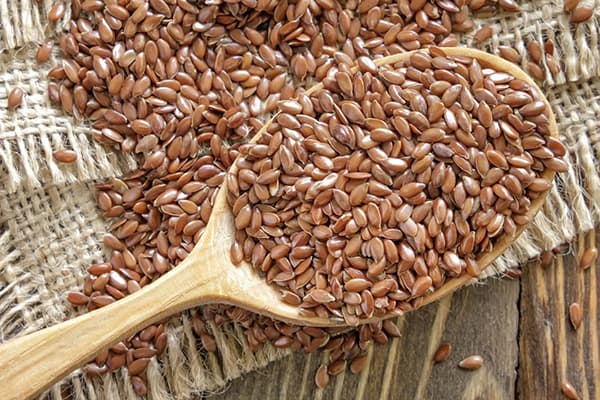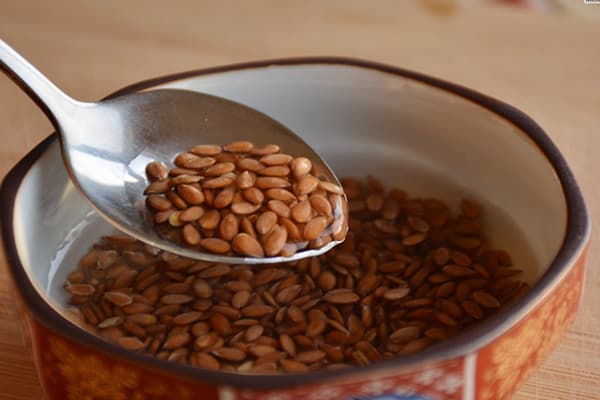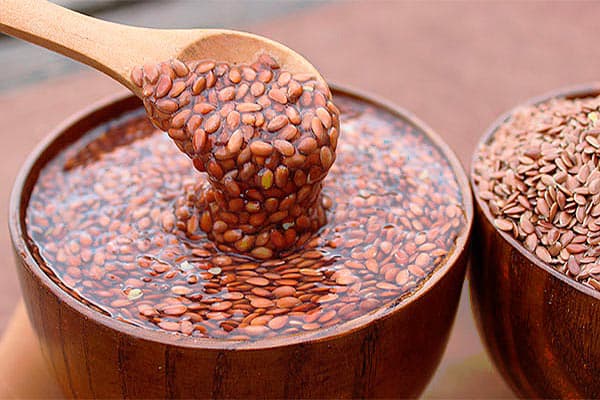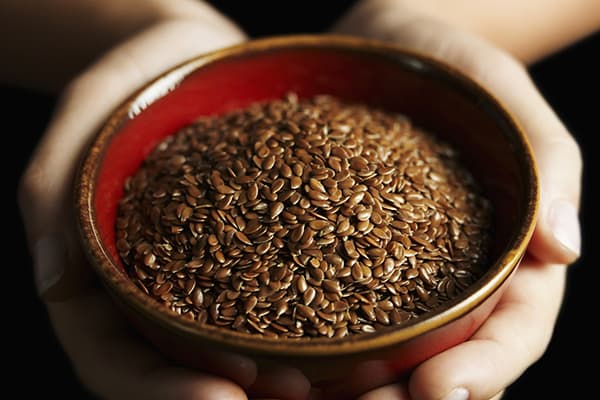How to soak flax seeds for food?
Content:
Flaxseeds - a useful dietary supplement that can improve health, make up for the deficiency of vitamins and minerals. You can eat it for different purposes and in different ways: soak flax seeds before use, grind on a coffee grinder, cook decoctions and infusions. Many are interested in the question: how is flax eaten more correctly? Looking ahead, we emphasize that soaked seeds are better absorbed. In water, phytic acid binding microelements leaves them.
Is it necessary to soak flax seeds?
Flax is the oldest spinning and oilseed crop. It was cultivated in the Aegean period. Fiber for making clothes was obtained from the stems of the annual Linum plant. Seeds by cold pressing turned the oil. What is noteworthy, it was mainly used for technical purposes, and not as a nutritional supplement. Flaxseed oil was used in the manufacture of waterproof fabrics, paints, varnish, varnish. In the Middle Ages, artists used it to add brilliance to paintings.
Flax seed has been known since ancient times as a remedy for inflammation of the mucous membranes. Hippocrates described the recipe in his writings. He recommended pouring boiling water over seeds to get healing thick mucus. When used on an empty stomach, it reduces inflammation in the esophagus, promotes the healing of stomach ulcers, envelops the mucous membrane and anesthetizes. The same mucus can be used for cosmetic purposes. It deeply nourishes the skin and smoothes wrinkles.
The use of flax seeds for food is more diverse:
- Whole seeds are added to the baked goods. To give a nutty flavor, they are pre-fried.
- Ice cream, mousses are sprinkled with crushed seeds, and various confectionery products are decorated.
- For dietary nutrition, crushed dry seeds are used, which are washed down with plenty of water. Or the seeds are soaked. Both options are considered correct.
In fact, the idea of soaking the seeds before eating is relatively new. The impetus was the research conducted in 2004 in Europe. Scientists have found that phytic acid, which is found in all seeds, legumes and nuts, binds minerals (calcium, zinc, iron, magnesium), proteins, starch and prevents their absorption in the human body. Fortunately, it is quite simple to neutralize it with ordinary cold water.
How to soak?
Water is needed to neutralize phytic acid in flaxseed. Certainly cold or room temperature (not boiling water). The whole point of manipulation is the awakening of sleeping seeds, that is, germination. Going to germinate, they secrete a special enzyme - phytase. It destroys phytic acid and provides flax with easily digestible phosphorus.
So, how do you soak the seeds for food?
- Pour the seeds into a glass bowl.
- Pour purified cold or slightly warm water in a ratio of 1: 2 (for example, 1 cup of seeds and 2 cups of water).
- To better neutralize phytic acid, you can add 1 teaspoon of sea or Himalayan salt.
- Place the bowl in a dark, warm place and cover with a thin, breathable cloth (towel, gauze).
- Drain and rinse the seeds several times. The drained liquid will contain phytic acid.
It is very convenient to soak flaxseeds with a margin. For storage, they are dried in the oven with the door ajar at a minimum temperature.
How much to soak flaxseed?
Different types of seeds, nuts and legumes have different soaking times.For example, almonds and hazelnuts can be safely left in the water overnight, that is, for all 8-12 hours. Flaxseed in this regard is the most unpretentious - soaking for half an hour is enough to increase its digestibility.
The benefits of a dietary supplement
Flax seed has a general healing effect on the body. Its benefits are due to nutritional value, mild laxative and anti-inflammatory effect. 100 g of the product contains 1.64 mg of vitamin B1, 392 mg of magnesium, 20 g of dietary fiber, 22.813 g of Omega-3 and 5.91 g of Omega-6 fatty acids, which allows you to completely replenish the daily intake. Seeds are rich in vitamins B5 and B9, calcium, phosphorus, iron, zinc, copper, manganese.
Flaxseeds are recommended to be included in the diet for health reasons:
- increase immunity;
- digestion improvement;
- normalization of the intestines with constipation,
- hair strengthening;
- beautiful skin color;
- proper metabolism and weight loss;
- reduction of edema;
- elimination of dry eye syndrome, dry skin;
- strengthening the nervous and cardiovascular systems.
Flax seeds are taken in strictly limited quantities - no more than 2 tablespoons per day. Otherwise, a dietary supplement will provoke diarrhea. With flatulence and bloating, the daily norm of seeds is reduced to 1 teaspoon.
Undoubtedly, for health it is more beneficial to use flax, previously soaked in water for half an hour. Simple manipulation helps get rid of phytic acid and thereby improve the absorption of vitamins and minerals. But in fairness, we note: phytic acid is not so harmful. Studies conducted in the 80–90s, showed that it has antioxidant, anti-inflammatory and anti-cancer properties, reduces the risk of heart disease and kidney stones. The norm is 400-800 mg phytic acid per day. It turns out that it is impossible to unequivocally recommend only soaked seeds for eating. Correctly eat them, and so, and so. Build on the desired effect and eat flaxseeds to good use!




